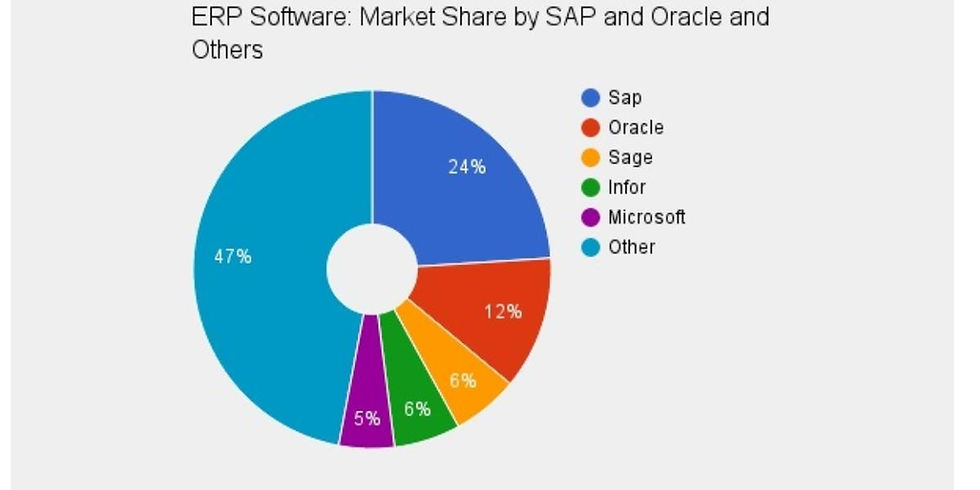Enterprise Resource Planning
- Rajesh Sharma

- Nov 25, 2020
- 2 min read
Updated: Aug 18, 2021

What is Enterprise Resource Planning?
Introduction
ERP stands for enterprise resource planning, but what does ERP mean? The simplest way to define ERP is to think about all the core processes needed to run a company: finance, HR, manufacturing, supply chain, services, procurement, and others. At its most basic level, ERP integrates these processes into a single system.
Before ERP
Before ERP companies used individual department software for Example
Accounts Department Software

Production Department Software

Sales Department Software

HR Department Software

The Result of Individual packages
Without ERP it was very tricky to generate business reports and balance sheet and other statements because of no integration of all departments of the company. Generating of reports was time consuming and more probability of error was higher which effect the decision making for the higher management.
During Quarterly Report Submission by every department of management…….
It leads to many problems like
Non tallying of facts and figures
No integration and updating between each departments
The decision making is not accurate

What Industries Needs?
Data Accuracy
Instant availability of data
Data Accuracy help in Decision Making
Decision will be based on accuracy of data
If data is not accurate decision will be wrong…
So all the CEO and other decision makers of the company need accurate data in time.
It is possible only based on ERP packages
What is ERP?

Why we need ERP?
Higher productivity: Streamline and automate your core business processes to help everyone in your organization do more with fewer resources.
Deeper insights: Eliminate information silos, gain a single source of truth, and get fast answers to mission-critical business questions.
Accelerated reporting: Fast-track business and financial reporting and easily share results. Act on insights and improve performance in real time.
Lower risk: Maximize business visibility and control, ensure compliance with regulatory requirements, and predict and prevent risk.
Simpler IT: By using integrated ERP applications that share a database, you can simplify IT and give everyone an easier way to work.
Improved agility: With efficient operations and ready access to real-time data, you can quickly identify and react to new opportunities.
Without ERP VS With ERP


Who is ERP System Providers?


Market Share

It's Time to think about


Switch to SAP
Achieve the Goal
Happy SAP learning Journey logon www.sastrageek.com








“I’ve been using Big Mumbai for a few weeks now, and the results are always transparent and fair.”
big mumbai | big mumbai login
"Huge win for the team, yay win game! Let’s keep this momentum going!"
Yaywin
"Tigro Club is changing the game with its innovative features and thrilling gameplay. A must-try for gaming fans!"
Tigro Club | Tigro Club App | Tigro Club Login
EPS Machine EPS Cutting…
EPS Machine Eps Raw…
EPS Machine EPS Recycling…
EPS Machine EPS Mould;
EPS Machine EPS Block…
EPP Machine EPP Shape…
EPTU Machine ETPU Moulding…
EPS Machine Aging Silo…
EPTU Machine ETPU Moulding…
EPS Machine EPS and…
EPS Machine EPS and…
AEON MINING AEON MINING
AEON MINING AEON MINING
KSD Miner KSD Miner
KSD Miner KSD Miner
BCH Miner BCH Miner
BCH Miner BCH Miner